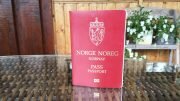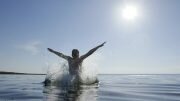The brand new Norwegian research ship, Crown Prince Haakon, has investigated the possibilities of fishing more krill in Antarctica. The conclusion is that the potential is great.
Norway is a great power in krill fishing, and stands alone for almost half of the Antarctic fishing.
The little fish which can grow up to 6 centimeters long, rises up as a possible contribution to the world’s food challenges.
‘’Humanity is growing out of the planet we live on.
We need food. There is an increasing need for protein, and krill provides high quality protein. Krill fishing could replace other fisheries that are currently over-taxed, but it requires that it is based on thorough research and that it is sustainable’’ said researcher, Bjørn Krafft of the Institute of Marine Research.
Scientific expeditions
Krafft has recently returned from a trip as a leader aboard the research vessel, Kronprins Haakon, Norway’s new pride worth NOK 1.4 billion.
The destination was Antarctica.
‘’We have covered a large area to map the extent and amount of krill. We have had people on land on three different islands and marked penguins, seals and whales with satellite transmitters. These are among the animals that rely on krill as food. We need to find out how much food they need and how much to take out’’ he said.
On Saturday, the researcher presented some of the results of the voyage during an Antarctic seminar in the Chilean city of Punta Arenas, in connection with the Norwegian state visit in the country.
‘’The principle is that people should supply themselves after others have eaten’’, said Krafft.
Great potential
Today, 300,000 tonnes of krill are fished each year. Norway accounts for about half of this, but the total quota is 625,000 tonnes, so under half is taken out.
‘’We see that the potential is much higher. We have
calculated a top limit of 5–6 million tonnes. And this is also only in a part of Antarctica’’ said Krafft.
The figures are based on previous research findings, and the results of the last voyage are not yet clear.
‘’But the potential is much higher than today’s precautionary quota’’ Krafft said.
Today most of the krill catches go to flour production, which in turn is used for fish feed and aquaculture industry. In addition, omega 3 products and antioxidants are made that can go directly to human consumption.
‘’There is a sharp increase in patent applications submitted, and the interest is very large. There are many possibilities here’’ said Krafft.
Demand
The Røkke-owned company, Aker BioMarine, alone fishes the Norwegian part of the krill quota.
‘’Our limitation is the capacity of our fishing boats. Historically, never more than half of the quota has been taken’’ said Executive Vice President, Kristine Hartmann, who heads the strategic change program in Aker BioMarine.
She strongly believes that the product they deliver will be more in demand in the future.
‘’This applies to both food production and human
consumption’’ said Hartmann.
She pointed out that although many people in Norway get a lot of omega 3, the proportion who take omega 3 supplements is low in most of the world.
© NTB Scanpix / #Norway Today




